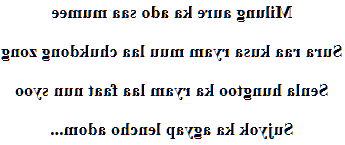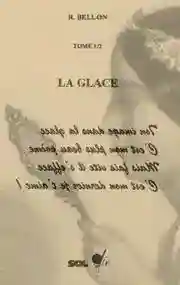Lepcha love poem
Milung
Milung aure ka ado saa mumee
Sura raa kusa ryam muu laa chukdong zong
Senla hungtoo ka ryam laa faat nun syoo
Sujyok ka agyap lencho adom...

With the Lepcha script
ᰕᰧᰜᰪᰰᰃ
ᰕᰧᰜᰪᰰᰃ ᰣᰩᰛᰬ ᰀ ᰣᰌᰨ ᰠᰣ ᰕᰪᰕᰬᰣᰬ
ᰠᰪᰛ ᰛᰣ ᰀᰪᰠ ᰛᰤᰕ ᰕᰪᰣᰪ ᰜᰣ ᰇᰪᰭᰌᰨᰰᰃ ᰡᰨᰰᰃ
ᰠᰬᰰᰜ ᰝᰪᰰᰃᰊᰨᰣᰨ ᰀ ᰛᰤᰕ ᰜᰣ ᰑᰣᰳ ᰍᰪᰰ ᰠᰤᰨᰣᰨ
ᰠᰪᰈᰤᰨᰭ ᰀ ᰣᰃᰤᰎ ᰜᰬᰰᰇᰨ ᰣᰌᰨᰮ᰼

→ French poem ←
Lepcha language
Love poem translated into Lepcha. Other names and dialects (Róngkup, Lapche, Rengjongmu, Lapcha, Rongke, Nünpa, Rong, Tamsangmu, Ilammu, Rongpa, Róng, Róng-Ríng, ᰛᰩᰵᰛᰧᰵᰶ).
Lepcha is classified in the Tibeto-Burman language group. This Himalayan language is spoken in India in the state of Sikkim (Dzongu), and just to the south in the state of West Bengal (Darjeeling), as well as in Bhutan and Nepal. The ancient kingdom of Sikkim included present-day Sikkim and almost all of Darjeeling.
The word Lepcha comes from Nepali (Lep = language, Cha = unintelligible) - incomprehensible speech.
The Lepcha spoken in these different places, has some lexical differences, linked to the variable influence of Nepali.
Among the particularities of this language, I would like to cite one: there is no offensive word in Lepcha.
The Lepcha language is linked to the languages spoken by the Mangars, the Mikirs, the Adis and the Khasis. The Tibetan influence, which reigned over them for many centuries, is also notable.
Today, Lepcha is one of the official languages of Sikkim and Darjeeling, it is taught in schools, and some media are in Lepcha.
It is difficult to know the total number of speakers. Perhaps there are 60,000, and around and among them are other migratory groups.
Even if in northern Sikkim, an area is reserved for them (few foreigners have been authorized to settle), and if an association promotes language and culture, the Lepchas, who are generally bilingual with Nepali, little by little are abandoning their language, which today is classified as endangered.
Their literature for a long time was only translations of Tibetan works.
The Lepchas
The Lepchas, who call themselves Rong (Rong pa) (ravine, mountain), are approximately 90,000. They live in northern India (Sikkim (Dzongu), and Darjeeling), in Bhutan and in Nepal. They are considered to be the first inhabitants of Sikkim.
Their origin is unclear. Some think that they come from China (Ta Tai), others from Nepal.
Today, in Sikkim, due to strong immigration from Nepal, they are a minority and are divided into clans (families) in many villages.
Long time hunters, today they practice breeding and agriculture. Marriages are or were based more on an alliance for work, rather than on romance.
Contrary to Indian customs, among the Lepchas, there is no caste system. Their society is based on equality, men and women have the same rights.
Although they have been Buddhists for more than 300 years, they maintain a rich culture and folklore, rites and shamanist beliefs. Their legends, like that of the flood, are passed down from generation to generation.